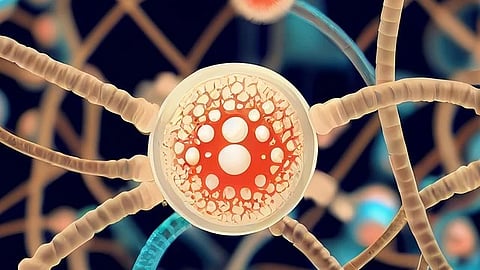A biochemical timelapse
The study, published in the journal Nature Structural and Molecular Biology, delves into the movements of the Anaphase-Promoting Complex/Cyclosome (APC/C), a ubiquitin ligase that drives the cell cycle. The mechanics behind APC/C’s attaching of a ubiquitin signal remained an unsolved puzzle. Haselbach and Nicholas Brown, PhD, associate professor of pharmacology at the UNC School of Medicine, are co-senior authors.
“We had a solid grasp of APC/C’s fundamental structure, a prerequisite for time-resolved cryo-EM,” said first author Tatyana Bodrug, PhD, a postdoctoral pharmacology researcher at UNC-Chapel Hill. “Now we have a much better understanding of its function, every step of the way.”
Ubiquitin ligases perform many tasks, including recruiting different substrates, interacting with other enzymes, and forming different types of ubiquitin signals. The scientists visualized interactions between ubiquitin-linked proteins and APC/C and its co-enzymes. They reconstructed the movements undergone by APC/C during polyubiquitination using a form of deep learning called neural networks. This was a first in protein degradation research.
The APC/C is a part of the large family of ubiquitin ligases (more than 600 members) that have yet to be characterized in this manner. Global efforts will keep pushing the boundaries of this field.
“A key to the success of our work was collaboration with several other teams,” said Brown, also a member of the UNC Lineberger Comprehensive Cancer Center. “At Princeton University, Ellen Zhong’s software and programming contributions were key to uncovering new insights about the APC/C mechanism. Subsequent validation of these findings required the help of several other groups led by Drs. Harrison, Steimel, Hahn, Emanuele, and Zhang. A team effort was crucial to push our research over the finish line.”
The significance of this research extends beyond its immediate impact, paving the way for future explorations into the regulation of ligases, ultimately promising deeper insights into the mechanisms underpinning protein metabolism important for human health and diseases, such as many forms of cancer.
Written by Mehdi Khadraoui, communications officer at the Research Institute of Molecular Pathology (IMP), part of the Vienna BioCenter. UNC School of Medicine contact is Mark Derewicz, director of research and national news. (Newswise/ DPK)


